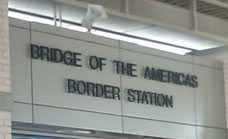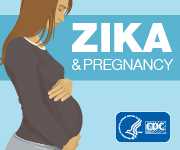Programs and Activities
To address the health issues that affect the United States and Mexico, the Centers for Disease Control and Prevention (CDC) works with key partners to conduct the following activities.
United States-Mexico Binational Technical Working Group (BTWG)
The goal of the BTWG is to improve public health in the United States and Mexico. The group provides an established forum for the U.S. CDC and the Mexican Undersecretary for Prevention and Promotion within the Secretary of Health to facilitate regular discussion on technical matters in public health. The BTWG also advances binational collaborations in areas of mutual interest, such as:
- outbreak investigations;
- improved technology for laboratory diagnosis of infectious diseases;
- laboratory and epidemiology trainings; and
- infectious disease surveillance.
Binational Border Infectious Disease Surveillance Program (BIDS)
CDC’s Binational Border Infectious Disease Surveillance (BIDS) program conducts enhanced binational surveillance as a way to monitor the spread of disease in the border region.
Binational Tuberculosis Program
The goal of binational tuberculosis activities is to continue care and management of tuberculosis (TB) patients who cross southern land borders. CDC’s Division of Global Migration and Quarantine and Division of Tuberculosis Elimination collaborate with the Department of Homeland Security (DHS), the Secretariat of Health of Mexico, U.S. and Mexico state health departments, and nongovernmental organizations on this effort.
Binational Tuberculosis Program activities include
- Providing TB consultation at ports of entry and elsewhere to DHS and other federal, state, and local public health partners to enhance identification and reporting of migrants with TB.
- Monitoring the arrival of newly admitted immigrants from Mexico with TB conditions and ensuring their referral to healthcare providers.
- Working with multiple partners to ensure that migrants with TB continue to receive TB treatment and care.
Migrant Health Program

The Bridge of the Americas connects El Paso, TX to Ciudad Juarez, Mexico. Photo credit: Maureen Fonseca-Ford, CDC.
The goal of the Migrant Health Program is to review and develop strategies to better understand and improve the health of specific migrant populations, with a focus on Mexican and other Spanish-speaking migrants. CDC and partners work toward this goal by
- Studying and improving the ways that CDC assesses the health status of migrant populations.
- Providing outreach and health education to migrant populations.
- Raising awareness about health disparities affecting migrant populations and effective interventions to address inequities.
Regulatory Responsibilities
Two quarantine stations on the United States-Mexico land border – the El Paso and San Diego stations—are responsible for carrying out regulatory responsibilities for the Southern land border, the airports, and the seaports.
Under section 361 of the Public Health Service Act (42 U.S. Code § 264), parts 70 and 71, CDC is authorized to detain, medically examine, and release persons arriving into the United States and traveling between states who are suspected of carrying communicable diseases.
For more information about how this authority is implemented, read the fact sheet about CDC’s El Paso and San Diego Quarantine Stations and Legal Authorities for Isolation and Quarantine.
- Page last reviewed: February 1, 2013
- Page last updated: June 28, 2013
- Content source:




 ShareCompartir
ShareCompartir